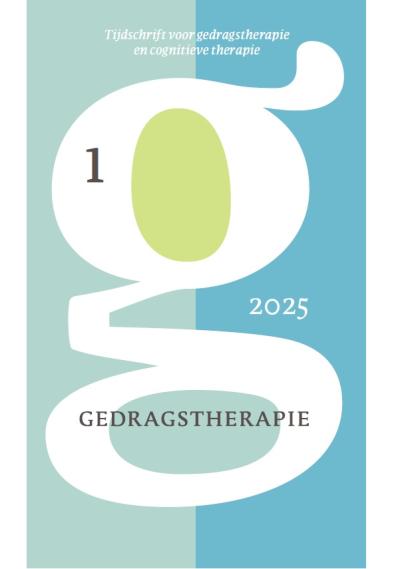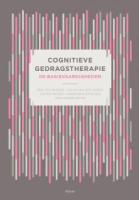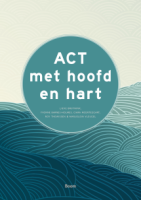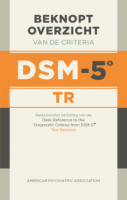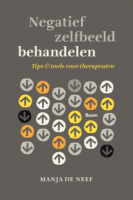Inhoud
Over de plaats van existentiële thema’s in cognitieve gedragstherapie
Samenvatting
In cognitieve gedragstherapie (CGT) kunnen allerlei onderwerpen aan bod komen, waaronder ook ingrijpende thema's, zoals de angst voor de dood. Behoort het ingaan op dit soort kwesties tot het vak van de CGT therapeut? En is hij hiervoor dan voldoende toegerust? In dit artikel worden existentiële vragen belicht vanuit een psychotherapeutische stroming die vanouds veel aandacht heeft gehad voor dit onderwerp. Deze existentiële psychotherapieën worden vergeleken met de tweede en derde generatie CGT. Vervolgens wordt een vertaalslag naar de praktijk gemaakt door de behandeling van angst voor de dood te bespreken. Tenslotte wordt ingegaan op bovenstaande vragen en worden aanbevelingen voor de praktijk en voor verder onderzoek gedaan.
Literatuur
- A-Tjak, J., & Groot F. de (2008). Acceptatie. In A-Tjak, J., & Groot, F. de (Eds.). (2008). Acceptance & Commitment Therapy – een praktische inleiding voor hulpverleners. (pp. 21-30). Utrecht: Bohn Stafleu Van Loghum.
- Addis, M.E., & Jacobson, N.S. (1996). Reasons for depression and the process and out come of cognitive-behavioral psychotherapies. Journal of Consulting and Clinical Psychology, 64, 1417-1424.
- Ball, S.G., & Otto, M.W. (1994). Cognitive-Behavioral Treatmant of Choking Phobia: 3 Case Studies. Psychotherapy and Psychosomatics: International Journal of Psychotherapy and Psychosomatics, 62, 207-211.
- Beck, A.T., Rush, A.J., Shaw, B.F., & Emery, G. (Eds.). (1979). Cognitive therapy of depression. New York: Guilford Press.
- Bohlmeijer, E.T. (2012). Eudaimonia, voer voor psychologen pleidooi voor een heroriëntatie van de geestelijke gezondheidszorg. Enschede: University of Twente.
- Bornstein, R.F. (2004). Integrating cognitive and existential treatment strategies in psychotherapy with dependent patients. Journal of Contemporary Psychotherapy, 34, 293-309.
- Breitbart, W., Rosenfeld, B., Gibson, C., Pessin, H., Poppito, S., Nelson, C., Tomarken, A., Timm, A.K., Berg, A., Jacobson, C., Sorger, B., Abbey, J., & Olden, M. (2010). Meaningcentered group psychotherapy for patients with advanced cancer: a pilot randomized controlled trial. Psycho-Oncology, 19, 21-28. doi: 10.1002/pon.1556
- Brown, L.A., Gaudiano, B.A., & Miller, I.W. (2011). Investigating the similarities and differences between practitioners of second- and third-wave cognitive-behavioral therapies. Behavior Modification, 35, 187-200.
- Butcher, P. (1984). Existential-behaviour therapy: a possible paradigm? British Journal of Medical Psychology, 57, 265-274.
- Conte, H.R., Weiner, M.B., & Plutchik, R. (1982). Measuring death anxiety: conceptual, psychometric, and factor-analytic aspects. Journal of personality and social psychology, 43, 775-785.
- Cooper, M. (2003). Existential therapies. London ; Thousand Oaks, Calif.: Sage Publications.
- Cooper, M., & Adams, M. (2005). Death. In E. v. Deurzen & C. Arnold-Baker (Eds.), Existential perspectives on human issues - a handbook for therapeutic practice. Hampshire / New York: Palgrave Macmillan.
- Corrie, S., & Milton, M. (2000). The relationship between existential-phenomenological and cognitive-behaviour therapies. European Journal of Psychotherapy, Counselling & Health, 3, 7-24.
- Deurzen, E. van, & Adams, M. (2011). Skills in Existential Counseling and Psychotherapy. Los Angeles, London, New Delhi, Singapore, Washington DC: Sage.
- Dyck, M.J. (1987). Cognitive therapy and logotherapy: Contrasting views on meaning. Journal of Cognitive Psychotherapy: An International Quarterly, 1, 155-169.
- Edwards, D.J.A. (1990). Cognitive-behavioral and existential-phenomenological approaches to therapy: Complementary or conflicting paradigms? Journal of Cognitive Psychotherapy: An International Quarterly, 4, 105-120.
- Ellis, A. (2003). Similarities and Differences Between Rational Emotive Behavior Therapy and Cognitive Therapy. Journal of Cognitive Psychotherapy: An International Quarterly, 17, 225-240.
- Frankl, V.E. (1978). De zin van het bestaan - Een inleiding tot de Logotherapie. Rotterdam: Donker.
- Fry, P.S. (2003). Perceived self-efficacy domains as predictors of fear of the unknown and fear of dying among older adults. Psychology and Aging, 18, 474-486.
- 133 Gedragstherapie 46 119-134
- Gebler, F.A. (2010). Integration einer existentziellen Perspective in die kognitiv-behaviorale Therapie chronischer Schmerzen. Verhaltenstherapie, 20, 127-134.
- Gebler, F A., & Maercker, A. (2012). Integrating an existential perspective into a cognitive behavioral group program for chronic pain. A controled clinical trial. [Integration einer existenziellen Perspektive in ein kognitiv-behaviorales Schmerzbewältigungsprogramm: Eine Kontrollgruppenstudie im stationären Setting.] Zeitschrift für Klinische Psychologie und Psychotherapie, 41, 90-100.
- Glas, G. (2001). Angst - beleving, structuur, macht. Amsterdam: Boom.
- Harding, M. (2005). Language. In E. v. Deurzen & C. Arnold-Baker (Eds.), Existential per spectives on human issues (pp. 93-99). New York: Palgrave Macmillan.
- Harris, R. (2009). De valstrik van het geluk. Houten: Bohn Stafleu Van Loghum.
- Harris, R. (2010). Acceptatie en commitment therapie in de praktijk - een heldere en toegankelijke introductie op ACT. Amsterdam: Hogrefe.
- Hayes, S.C., Strosahl, K.D., & Wilson, K. G. (2003). Acceptance and Commitment Therapy: an experiential approach to behavior change. New York, London: Guilford Press.
- Hutchinson, G.T., & Chapman, P. (2005). Logotherapy-Enhanced REBT: An Integration of Discovery and Reason. Journal of contemporary Psychotherapy, 35, 145-155.
- Jacobs, G. (1998). Rationeel-emotieve therapie - een praktische gids voor hulpverleners. Houten Diegem: Bohn Stafleu Van Loghum.
- Kissane, D. W., Bloch, S., Miach, P., Smith, G. C., Seddon, A., & Keks, N. (1997). Cognitive Existential Group Therapy for Patients with Primary Breast Cancer — Techniques and Themes. Psycho-Oncology, 6, 25-33.
- Koole, S.L., Greenberg, J., & Pyszczynski, T. (2006). Introducing science to the psychology of the soul: Experimental existential psychology. Current Directions in Psychological Science, 15, 212-216.
- Korrelboom, K., & Broeke, E. ten (2004). Geïntegreerde cognitieve gedragstherapie. Bussum: Coutinho.
- Langs, R. (2004). Death anxiety and the emotion-processing mind. Psychoanalytic Psychology, 21, 31-53. doi: 10.1037/0736-9735.21.1.31
- Lehto, R.H., & Farchaus Stein, K. (2009). Death anxiety: an Analysis of an Evolving Concept. Research and Theory for Nursing Practice: an International Journal, 23, 23-41.
- Mahrer, A.R., & Boulet, D.B. (2004). How Can Existentialists do Research on Psychotherapy? Existential Analysis: Journal of the Society for Existential Analysis, 15, 15-28.
- Mikulincer, M., Florian, V., & Hirschberger, G. (2004). The Terror of Death and the Quest for Love - An Existential Perspective on Close Relationships. In Greenberg, J. Koole, S. L. & Pyszczynski, T. (Eds.) Handbook of Experimental Existential Psychology (pp 287304). New York: Guilford Press.
- Niemiec, C.P., Brown, K.W., Kashdan, T.B., Cozzolino, P.J., Breen, W.E., Levesque-Bristol, C., & Ryan, R. M. (2010). Being present in the face of existential threat: The role of trait mindfulness in reducing defensive responses to mortality salience. Journal of Personality and Social Psychology, 99, 344-365. doi: 10.1037/a0019388
- Noyes, R., Jr., Stuart, S., Longley, S.L., Langbehn, D.R., & Happel, R.L. (2002). Hypochondriasis and fear of death. The Journal of nervous and mental disease, 190(8), 503-509. doi: 10.1097/01.NMD.0000026619.27653.B4
- Noyon, A., & Heidenreich, T. (2007). Die existenzielle perspektive in der verhaltenstherapie. Verhaltenstherapie, 17, 122-128.
- Ottens, A.J., & Hanna, F.J. (1998). Cognitive and existential therapies: Toward an integration. Psychotherapy, 35, 312-324.
- Persons, J.B. (1986). Generalization of the effects of exposure treatments for phobias: A single case study. Psychotherapy, 23, 160-166.
- Schulenberg, S.E. (2003). Empirical research and logotherapy. Psychological Reports, 93, 307-319.
- Sharp, W., Schulenberg, S.E., Wilson, K.G., & Murrell, A.R. (2004). Logotherapy and Acceptance and Commitment Therapy (ACT): an Initial Comparison of Values-Centered Approaches. The International Forum for Logotherapy, 27, 98-105.
- Spinelli, E. (2001). Psychosis: New existential, systemic, and cognitive-behavioral developments. Journal of Contemporary Psychotherapy, 31, 61-67.
- Swildens, H. (2004). De existentiële opgaven. In G. Pool, F. Heuvel, A. V. Ranchor & R. S anderman (Eds.), Handboek psychologische interventies bij chronisch-somatische aandoeningen. Assen: Van Gorcum.
- Tillich, P. (1952). The Courage to Be. New Haven London: Yale University Press.
- Walen, S.R., DiGiuseppe, R., & Dryden, W. (1992). A Practitioner's Guide to Rational-Emotive Therapy. New York / Oxford: University Press.
- Westerhof, G., & Bohlmeijer, E. (2010). Psychologie van de levenskunst. Amsterdam: Boom.
- Wollants, G., & Lietaer, G. (2000). De existentiële dimensie: de betekenis van het existentieel-fenomenologisch gedachtegoed voor de psychotherapeutische praktijk. . In W. Trijsbrug, S. Colijn, E. Collumbien & G. Lietaer (Eds.), Handboek integratieve psychotherapie (Vol. 4, pp. 1-32). Utrecht: De Tijdstroom.
- Yalom, I.D. (1980). Existential psychotherapy. New York: Basic Books.
- Yalom, I.D. (2008). Staring at the sun : overcoming the terror of death. San Francisco: Jossey-Bass.
 © 2009-2025 Uitgeverij Boom Amsterdam
© 2009-2025 Uitgeverij Boom Amsterdam
De artikelen uit de (online)tijdschriften van Uitgeverij Boom zijn auteursrechtelijk beschermd. U kunt er natuurlijk uit citeren (voorzien van een bronvermelding) maar voor reproductie in welke vorm dan ook moet toestemming aan de uitgever worden gevraagd:
Behoudens de in of krachtens de Auteurswet van 1912 gestelde uitzonderingen mag niets uit deze uitgave worden verveelvoudigd, opgeslagen in een geautomatiseerd gegevensbestand, of openbaar gemaakt, in enige vorm of op enige wijze, hetzij elektronisch, mechanisch door fotokopieën, opnamen of enig andere manier, zonder voorafgaande schriftelijke toestemming van de uitgever.
Voor zover het maken van kopieën uit deze uitgave is toegestaan op grond van artikelen 16h t/m 16m Auteurswet 1912 jo. Besluit van 27 november 2002, Stb 575, dient men de daarvoor wettelijk verschuldigde vergoeding te voldoen aan de Stichting Reprorecht te Hoofddorp (postbus 3060, 2130 KB, www.reprorecht.nl) of contact op te nemen met de uitgever voor het treffen van een rechtstreekse regeling in de zin van art. 16l, vijfde lid, Auteurswet 1912.
Voor het overnemen van gedeelte(n) uit deze uitgave in bloemlezingen, readers en andere compilatiewerken (artikel 16, Auteurswet 1912) kan men zich wenden tot de Stichting PRO (Stichting Publicatie- en Reproductierechten, postbus 3060, 2130 KB Hoofddorp, www.cedar.nl/pro).
No part of this book may be reproduced in any way whatsoever without the written permission of the publisher.
Inloggen VGCt en VVGT
Leden van de VGCt en de VVGT loggen in via de site van hun vereniging. Als u op die site bent ingelogd als lid, vindt u daar een button naar het Tijdschrift voor Gedragstherapie.
English
Behavioral Therapy: Journal for Behavioral Therapy and Cognitive Therapy ISSN 0167-7454
Information in English can be found here.



